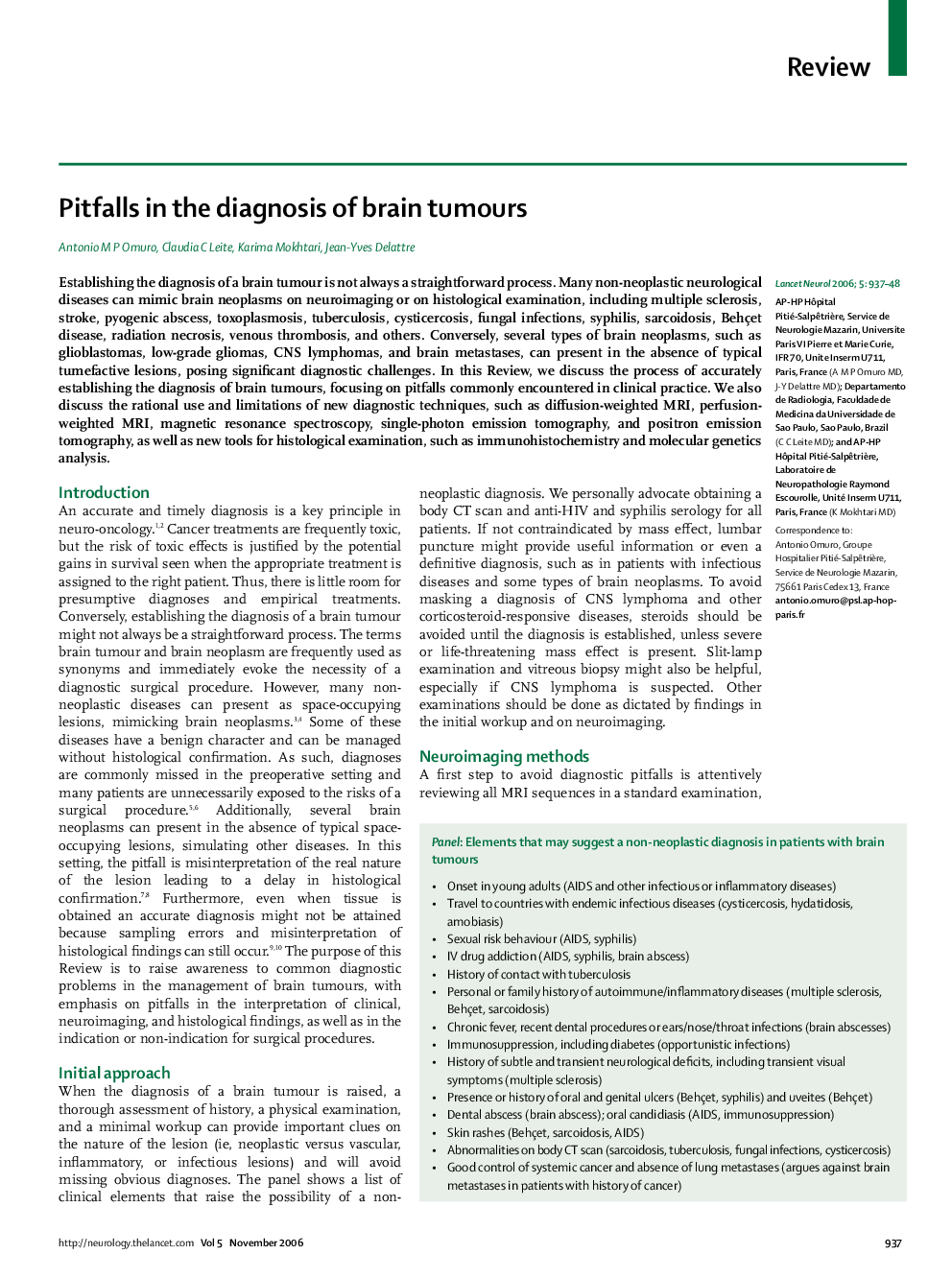| Article ID | Journal | Published Year | Pages | File Type |
|---|---|---|---|---|
| 3067969 | The Lancet Neurology | 2006 | 12 Pages |
SummaryEstablishing the diagnosis of a brain tumour is not always a straightforward process. Many non-neoplastic neurological diseases can mimic brain neoplasms on neuroimaging or on histological examination, including multiple sclerosis, stroke, pyogenic abscess, toxoplasmosis, tuberculosis, cysticercosis, fungal infections, syphilis, sarcoidosis, Behçet disease, radiation necrosis, venous thrombosis, and others. Conversely, several types of brain neoplasms, such as glioblastomas, low-grade gliomas, CNS lymphomas, and brain metastases, can present in the absence of typical tumefactive lesions, posing significant diagnostic challenges. In this Review, we discuss the process of accurately establishing the diagnosis of brain tumours, focusing on pitfalls commonly encountered in clinical practice. We also discuss the rational use and limitations of new diagnostic techniques, such as diffusion-weighted MRI, perfusion-weighted MRI, magnetic resonance spectroscopy, single-photon emission tomography, and positron emission tomography, as well as new tools for histological examination, such as immunohistochemistry and molecular genetics analysis.
